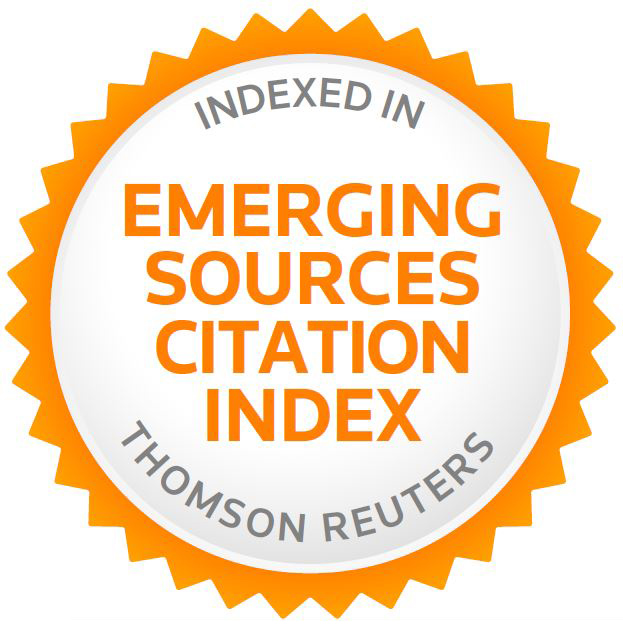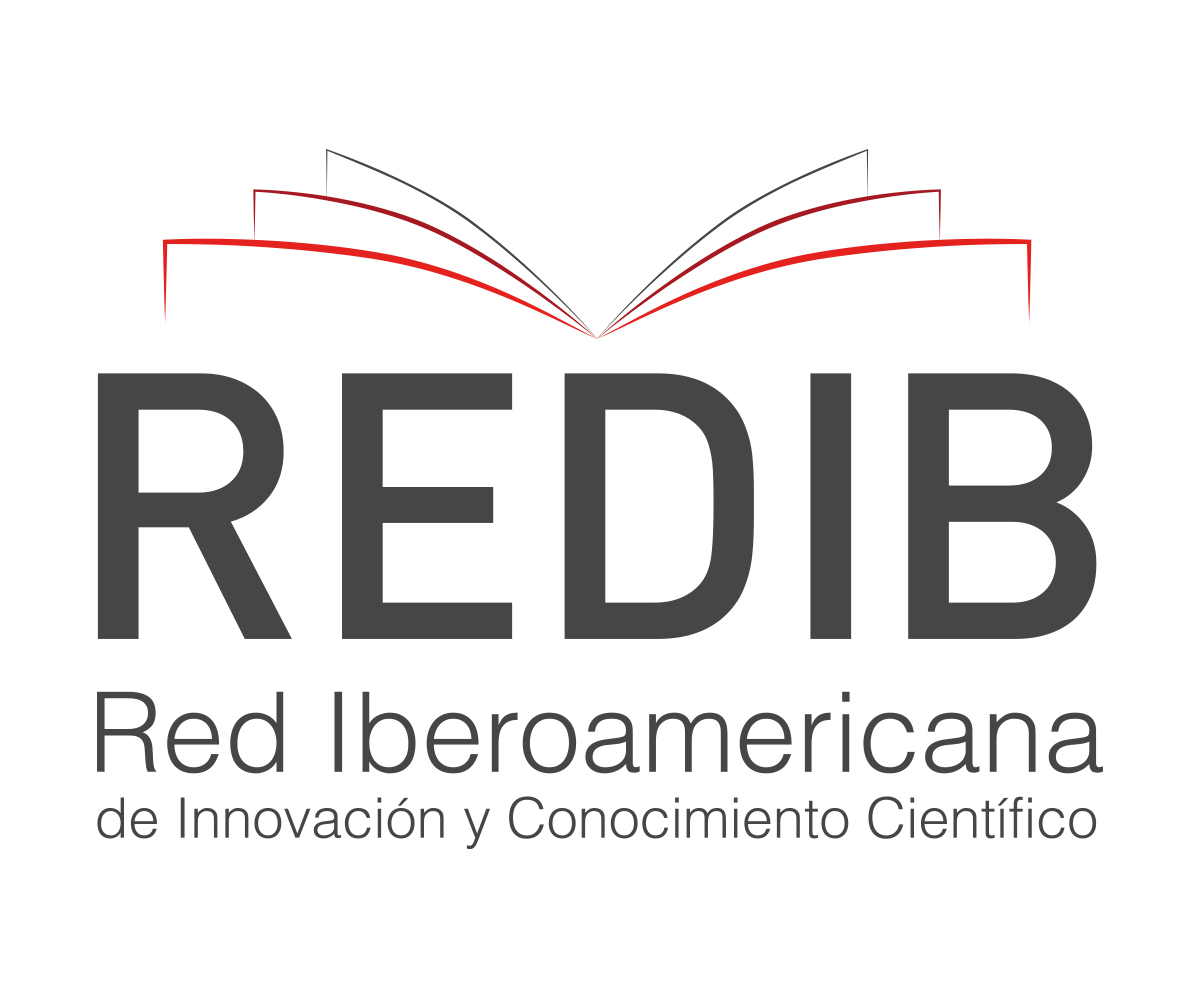Propuesta, desarrollo y validación de la escala Distance Higher Education Service Quality (DIHESQ)
Resumen
Los sectores de educación superior han alcanzado altos niveles de competencia. En este escenario, algunas universidades han respondido a través de la oferta de estudios en modalidad no tradicional (a distancia). Se han propuesto diversas escalas para medir la calidad de servicio en educación superior, pero son pocos los estudios que se han enfocado en la modalidad a distancia (modalidad no tradicional). Esto es relevante, por cuanto la educación superior a distancia presenta características que la diferencian de la educación superior en modalidad tradicional (presencial). Dado esto, la presente investigación se concentra en realizar una propuesta, desarrollo y validación de una escala de medida de calidad de servicio en educación superior a distancia, la cual tiene por nombre Distance Higher Education Service Quality (DIHESQ). Se aplica una metodología en tres etapas. En primer lugar, se propone la escala de medida DIHESQ asegurando su validez de contenido; luego, se aplica el análisis de unidimensionalidad; y, por último, se analizan sus propiedades psicométricas. Se concluye que el modelo DIHESQ es de segundo orden, reflexivo y multidimensional, y está compuesto por las siguientes dimensiones: (a) profesores y enseñanza; (b) plan curricular y material de estudio; (c) evaluación y feedback; (d) administración y organización; (e) plataforma funcional; (f ) plataforma emocional; (g) apoyo institución; e (i) social y laboral.Referencias
Anderson, J., & Gerbing, D. (1988). Structural equation modelling in practice: A review and recommended two-step approach. Psychological Bulletin, 103(3), 411-423.
Araya-Castillo, L., & Bernardo, M. (2019). Calidad de servicio en educación superior a distancia: propuesta de los modelos DIHESQ y SIBDHE. Revista Espacios, 40(44), 12.
Araya-Castillo, L., & Rivera-Arroyo, J. (2021). ¿Cómo las instituciones de educación supe- rior deben enfrentar los nuevos desafíos del entorno? Revista de Ciencias Sociales (Ve), XXVII(1), 22-32.
Asubonteng, P., McCleary, K. J., & Swan, J. E. (1996). SERVQUAL revisited: A critical review of service quality. Journal of Services Marketing, 10(6), 62-81.
Bagozzi, R., & Yi, Y. (1988). On the evaluation of structural equation models. Journal of Marketing Science, 6(1), 74-94.
Barrientos-Báez, A., Martínez-Sala, A., Altamirano, V., & Caldevilla-Domínguez, D. (2021). Fake news: La pandemia de la covid-19 y su cronología en el sector turís- tico. Historia y Comunicación Social, 26(Especial), 135-148.
Barrientos Oradini, N., & Araya-Castillo, L. (2018). Educación superior en Chile: una visión sistémica. Revista Aletheia, 10(1), 80-109.
Batista-Foguet, J. M., & Coenders, G. (1998). Introducción a los modelos estructurales. Utilización del análisis factorial confirmatorio para la depuración de un cuestiona- rio. En J. Rendom (Ed.), Tratamiento informático de datos (pp. 229-286).
Batista-Foguet, J. M., & Coenders, G. (2000). Modelos de ecuaciones estructurales (modelos para el análisis de relaciones causales). Madrid, España: Editorial La Muralla y Edi- torial Hespérides.
Batista-Foguet, J. M., Coenders, G., & Alonso, J. (2004). Análisis factorial confirmatorio. Su utilidad en la validación de cuestionarios relacionados con la salud. Medicina Clínica, 122(1), 21-27.
Bernardo, M., Marimon, F., & Alonso-Almeida, M. (2012). Functional quality and hedo- nic quality: A study of the dimensions of e-service quality in online travel agencies. Information & Management, 49(7), 342-347.
Bersin, J. (2004). The blended learning book: Best practices, proven methodologies and lessons learned. Estados Unidos: Wiley & Sons.
Bohrnstedt, G. W. (1976). Evaluación de la fiabilidad y la validez en la medición de acti- tudes. En G. F. Summers (Comp.), Medición de actitudes. México D. F.: Ed. Trillas. Brunner, J. J., Ganga-Contreras, F., & Rodríguez, E. (2018). Gobernanza del capitalismo académico: aproximaciones desde Chile. Revista Venezolana de Gerencia, 23(1),
11-35.
Brunner, J. J., Labraña, J., Ganga-Contreras, F., & Rodríguez-Ponce, E. (2019). Idea moderna de universidad: de la torre de marfil al capitalismo académico. Educación XX1, 22(2), 119-140.
Brunner, J. J., & Uribe, D. (2007). Mercados universitarios: el nuevo escenario de la educación superior. Chile: Ediciones Universidad Diego Portales.
Buil, I., Hernández, B., Sese, F., & Urquizu, P. (2012). Los foros de discusión y sus benefi- cios en la docencia virtual: recomendaciones para un uso eficiente. Innovar, 22(43), 131-143.
Caldevilla-Domínguez, D., Barrientos-Báez, A., & Padilla-Castillo, G. (2021). Twitter as a tool for citizen education and sustainable cities after COVID-19. Sustainability, 13(6), 3514.
Capelleras, J. L., & Veciana, J. M. (2004). Calidad de servicio en la enseñanza universita- ria: desarrollo y validación de una escala de medida. Revista Europea de Dirección y Economía de la Empresa, 13, 55-72.
Casanueva, C., Periáñez, R., & Rufino, J. E. (1997). Calidad percibida por el alumno en el servicio docente universitario: Desarrollo de una escala de medida. En XI Congreso Nacional Aedem, VII Congreso Hispano-Francés, 2, 27-34.
Castillo, J. A., & Ganga-Contreras, F. (2020). Dimensiones propuestas por la teoría de agencia: visiones de expertos sobre el gobierno universitario argentino. Interciencia, 45(4), 1-24.
Childers, T. L., Carr, C. L., Peck, J., & Carson, S. (2001). Motivaciones hedónicas y utili- tarias para el comportamiento de compras minoristas en línea. Journal of Retailing, 77(4), 511-535.
Cronin, J., & Taylor, S. (1992). Measuring service quality: A reexamination and extension.
Journal of Marketing, 55-68.
Cupani, M. (2012). Análisis de ecuaciones estructurales: conceptos, etapas de desarrollo y un ejemplo de aplicación. Revista Tesis, 1(1), 186-199.
De Lange, P., Suwardy, T., & Mavondo, F. (2003). Integrating a virtual learning environ- ment into an introductory accounting course: Determinants of student motivation. Accounting Education, 12(1), 1-14.
De Wulf, K., & Odekerken-Schröde, G. (2003). Assessing the impact of a retailer’s rela- tionship efforts on consumer attitudes and behavior. Journal of Retailing and Con- sumer Services, 10, 95-108.
Delgado-Almonte, M., Bustos, A., & Pedraja-Rejas, L. (2010). Information technologies in higher education: Lessons learned in industrial engineering. Educational Techno- logy & Society, 13(4), 140-154.
Deng, S., & Dart, J. (1994). Measuring market orientation: A multi-factor, multi-item approach. Journal of Marketing Management, 10(8), 725-742.
Denzin, N. K., & Lincoln, Y. S. (2000). The discipline and practice of qualitative research.
Handbook of qualitative research. Thousand Oaks, CA: Sage Publications.
Ding, L., Velicer, W. V., & Harlow, L. L. (1995). Effects of estimation methods, number of indicators per factor, and improper solutions on structural equation modeling fit indices. Structural Equation Modeling, 2, 119-143.
Douglas, J., McClelland, R., & Davies, J. (2008). The development of a conceptual model of student satisfaction with their experience in higher education. Journal of Quality Assurance in Education, 16(1), 19-35.
Ehlers, U. (2004). Quality in e-learning from a learner’s perspective. European Journal of Open and Distance Learning, 1, 73-90.
Entwistle, N., & Tait, H. (1990). Approaches to learning, evaluation of teaching, and pre- ferences for contrasting academic environments. Higher Education, 19(2), 169-194.
Escobedo Portillo, M., Hernández Gómez, J., Estebané Ortega, V., & Martínez Moreno,
G. (2016). Modelos de ecuaciones estructurales: características, fases, construcción, aplicación y resultados. Ciencia & Trabajo, 18(55), 16-22.
Fernández Pulido, R. (2008). Modelos de medida y análisis factorial confirmatorio. En M.
A. Verdugo, M. Crespo, M. Badía & B. Arias. (Eds.), Metodología en la investiga- ción sobre discapacidad. Introducción al uso de las ecuaciones estructurales. VI Simposio Científico SAID (pp. 29-42). Salamanca: Publicaciones del Inico, Colección Actas. Fornell, C., & Larcker D. F. (1981). Evaluating structural equation models with unobser-
vable variables and measurement error. J Mark Res, 18(1), 39-50.
Ganga-Contreras, F., Díaz-Barrios, J., & Borjas, C. (2020). Políticas de generación de recursos financieros en la universidad pública venezolana. Interciencia, 45(4), 176- 182.
Ganga-Contreras, F., Suárez-Amaya, W., Calderón, A.-I., Wandercil da Silva, M., & Jung,
H. (2019). Retos a la gobernanza universitaria: acotaciones sobre la cuestión de la autoridad y la profesionalización de la gestión de las universidades. Revista Frontei- ras, 8(3), 435-456.
Gil Villa, F., Urchaga Litago, J. D., & Sánchez Fernández, A. (2020). Percepciones y expec- tativas en el alumnado universitario a partir de la adaptación a la enseñanza no pre- sencial motivada por la pandemia de COVID-19. Revista Latina de Comunicación Social, 78, 65-85.
Gonzálvez-Vallés, J. E., Barquero-Cabrero, J. D., Caldevilla-Domínguez, D., & Barrien- tos-Báez, A. (2021). Tipsters and addiction in Spain. Young people’s perception of influencers on online sports gambling. International Journal of Environmental Research and Public Health, 18, 6152.
Greasley, A., & Bennett, D. J. (2004). A virtual learning environment for operations mana- gement: Assessing the student’s perspective. International Journal of Operations and Production Management, 24(10), 974-993.
Grow, G. (1991). Teaching learners to be self direct. Adult Education Quartely, 41(3), 125- 149.
Gruber, T., Fub, S., Voss, R., & Glaser-Zikuda, M. (2010). Examining student satisfaction with higher education services: Using a new measurement tool. International Jour- nal of Public Sector Management, 23(2), 105-123.
Hair, J., Anderson, R., Tatham, R., & Black, W. (1998). Multivariate data analysis (5.ª ed.).
Upper Saddle River: Prentice-Hall.
Hair, J., Black, W., Babin, B., Anderson, R., & Tatham, R. (2005). Multivariate data anal- ysis, (6.ª ed.). Londres, Reino Unido: Prentice-Hall International.
Hampton, G. (1993). Gap analysis of college student satisfaction as a measure of professio- nal service quality. Journal of Professional Services Marketing, 9(1), 115-128.
Hancock, G. R., & Mueller, R. O. (2001). Rethinking construct reliability within latent variable systems. Structural equation modeling: Present and future, 195-216.
Haynes, S. N., Nelson, K., & Blaine, D. (1999). Psychometric issues in assessment research. En P. C. Kendall, J. N. Butcher, G. Holmbeck (Eds.), Handbook of research methods in clinical psychology. Nueva York: Wiley.
Hill, F. M. (1995). Managing services quality in higher education: The role of the students as primary consumers. Quality Assurance in Education, 3(3), 10-21.
Holdford, D., & Patkar, A. (2003). Identification of the service quality dimensions of phar- maceutical education. American Journal of Pharmaceutical Education, 67(4), 1-11.
Icli, G. E., & Anil, N. K. (2014). The HEDQUAL scale: A new measurement scale of service quality for MBA programs in higher education. South African Journal of Business Management, 45(3), 31-43.
Jain, R., Sahney, S., & Sinha, G. (2013). Developing a scale to measure students’ percep- tion of service quality in the Indian context. The TQM Journal, 25(3), 276-294.
Jiménez-Bucarey, C. G., Araya-Castillo, L., & Rojas-Vallejos, J. (2020). Calidad de servicio como área de investigación en educación superior. Interciencia, 45(7), 329-337.
Jöreskog, K., & Sorbom, D. (1993). New feature in Lisrel 8. Chicago, Estados Unidos: Scientific Software.
Jung, I. (2011). The dimensions of e-learning quality: From the learner’s perspective. Edu- cation Tech Research Dev, 59, 445-464.
Kahn, J. H. (2006). Factor analysis in counseling psychology research, training and prac- tice: Principles, advances and applications. The Counseling Psychologist, 34, 1-36.
Keegan, P. (2011). Transformative e-learning and teaching in mandatory tertiary educa- tion. Asian Social Science, 7(11), 66-74.
Kristensen, K., Martensen, A., & Gronholdt, L. (1999). Measuring the impact of buying behaviour on customer satisfaction. Total Quality Management, 10(4-5), 602-614.
Labay, D. G., & Comm, C. L. (2003). A case study using gap analysis to assess distance learning versus traditional course delivery. The International Journal of Educational Management, 17(7), 312-317.
Ladhari, R. (2008). Alternative measures of service quality: A review. Managing Service Quality, 18(1), 65-86.
Larraín, C., & Zurita, S. (2008). The new student loan system in Chile’s higher education.
Higher Education, 55(6), 683-702.
Larwood, L., Falbe, C., Kriger, M., & Miesing, P. (1995). Structure and meaning of orga- nizational vision. Academy of Management Journal, 38(3), 740-769.
Liu, C. M., & Yun, C. (2005). The multi-dimensional and hierarchical structure of percei- ved quality and customer satisfaction. International Journal of Management, 22(3), 426-435.
López, R., & Yadav, N. (2010). Imports of intermediate inputs and spillover effects: Evi- dence from Chilean plants. Journal of Development Studies, 46(8), 1385-1403.
Malhotra, N. (2004). Investigación de mercados (4.ª ed.). México: Pearson Educación. Martensen, A., Grønholdt, L., Eskildsen, J. K., & Kristensen, K. (2000). Measuring stu-
dent oriented quality in higher education: Application of the ECSI methodology.
Sinergie – Rapporti di Ricerca, 9(18), 371-383.
Martínez-Argüelles, M. J., Blanco, M., & Castán, J. M. (2013). Las dimensiones de la calidad del servicio percibida en entornos virtuales de formación superior. Revista de Universidad y Sociedad del Conocimiento (RUSC), 10(1), 89-106.
Martínez-Argüelles, M., Castán, J., & Juan, A. (2010). How do students measure service quality in e-learning? A case study regarding an internet-based university. Electronic Journal of e-Learning, 8(2), 151-160.
Martínez-González, J. A., Parra-López, E., & Barrientos-Báez, A. (2021). Millennials’ support for tourism development: The effect of market orientation by governments. Tourism Review. http://doi.org/10.1108/TR-10-2020-0487
MacKenzie, S. B., Podsakoff, P. M., & Podsakoff, N. P. (2011). Construct measurement and validation procedures in MIS and behavioral research: Integrating new and existing techniques. MIS Quarterly, 35(2), 293-334.
Morales, M., & Calderón, L. (1999). Assessing service quality in schools of business: Dimensions of service quality in continuing professional education (CPE). Cuader- nos de Difusión, 5(9-10), 125-140.
Moreira, J. A., Reis-Monteiro, A., & Machado, A. (2017). Higher education distance lear- ning and e-learning in prisons in Portugal. Comunicar, 51(XXV), 39-49.
Nath, A., & Zheng, L. (2004). Perception of e-service quality in e-commerce (tesis de máster), Lulea University of Technology.
Netemeyer, R. G., Bearden, W. O., & Sughash, S. (2003). Scaling procedures: Issues and applications. Thousand Oaks, California: Sage Publications.
Nunnally, J. (1978). Psychometric (2.ª ed.). Nueva York, Estados Unidos: McGraw-Hill. Nunnally, J. (1987). Teoría psicométrica. México: Trillas.
Nunnally, J., & Bernstein, I. H. (1994). Psychometric theory (3.ª ed.). Nueva York: McGraw- Hill.
O’Neill, M., & Palmer, A. (2003). An exploratory study of the effects of experience on consumer perceptions of the service quality construct. Managing Service Quality, 13(3), 187-196.
O’Ryan, R., De Miguel, C., Miller, S., & Pereira, M. (2010). The socioeconomic and environmental effects of free trade agreements: A dynamic CGE analysis for Chile. Environment and Development Economics, 16(3), 305-332.
Olinsky, A., Chen, S., & Harlow, L. (2003). The comparative efficacy of imputation methods for missing data in structural equation modeling. European Journal of Operational Research, 151(1), 53-79.
Orgaz, M. B. (2008). Introducción a la metodología SEM: concepto y propósitos fundamen- tales. En M. A. Verdugo, M. Crespo, M. Badía & B. Arias (Coords.), VI Simposio Científico SAID: Metodología en la investigación sobre discapacidad. Introducción al uso de las ecuaciones estructurales (pp. 14-28). Colección Actas 5/2008. Salamanca: Publicaciones del Inico.
Pereda, M., Airey, D., & Bennett, M. (2009). Service quality in higher education: The experience of overseas students. Journal of Hospitality, Leisure, Sport and Tourism Education, 6(2), 55-67.
Ruiz, M., Pardo, A., & San Martín, R. (2010). Modelo de ecuaciones estructurales. Papeles del Psicólogo, 31(1), 34-45.
Salmerón-Pérez, H., Rodríguez-Fernández, S., & Gutiérrez-Braojos, C. (2010). Metodolo- gías que optimizan la comunicación en entornos de aprendizaje virtual. Comunicar, 34, 163-171.
Sarabia, F. (1999). Metodología para la investigación en marketing y dirección de empresas.
Madrid, España: Ediciones Pirámide.
Sebastián, J. (2007). Conocimiento, cooperación y desarrollo. CTS: Revista Iberoamericana de Ciencia, Tecnología y Sociedad, 3(8), 195-208.
Sena Rivas, W. R., Casillas Martín, S., Barrientos-Báez, A., & Cabezas González, M. (2019). La educomunicación en el contexto de alfabetización de personas jóvenes y adultas en América Latina: estado de la cuestión a partir de una revisión bibliográ- fica sistemática. Revista Latina de Comunicación Social, 74, 133-171.
Senthilkumar, N., & Arulraj, A. (2011). SQM-HEI – determination of service quality measurement of higher education in India. Journal of Modelling in Management, 6(1), 60-78.
Song, J. H., & Zinkhan, G. M. (2008). Determinants of perceived web site interactivy.
Journal of Marketing, 72, 99-113.
Subramony, M., Beehr, T., & Johnson, C. (2004). Employee and customer perceptions of service quality in an Indian firm. Applied Psychology. An International Review, 53(2), 311-327.
Sultan, P., & Wong, H. Y. (2011). Service quality in a higher education context: Antece- dents and dimension. International Review of Business Research Papers, 7(2), 11-20. Sutarso, Y., & Suharmadi, A. (2011). Promotion of e-technology-based services: A case study of e-service quality at a university in Indonesia. International Journal of Busi-
ness and Information, 112-133.
Tan, K., & Kek, S. (2004). Service quality in higher education using an enhanced SERV- QUAL approach. Quality in Higher Education, 10(1), 17-24.
Tejedor, S., Cervi, L., Tusa, F., & Parola, A. (2020). Educación en tiempos de pande- mia: reflexiones de alumnos y profesores sobre la enseñanza virtual universitaria en España, Italia y Ecuador. Revista Latina de Comunicación Social, 78, 1-21.
Torres, E., & Araya-Castillo, L. (2010). Construcción de una escala para medir la calidad del servicio de las universidades: una aplicación al contexto chileno. Revista de Cien- cias Sociales (Ve), 16(1), 54-67.
Udo, G. J., Bagchi, K. K., & Kirs, P. J. (2011). Using SERVQUAL to assess the quality of elearning experience. Computers in Human Behavior, 27(3), 1272-1283.

Esta obra está bajo licencia internacional Creative Commons Reconocimiento 4.0.
Apuntes, revista de Ciencia Sociales publica todos sus artículos y reseñas bajo la licencia Creative Commons Attribution (CC BY 4.0) con el objetivo de fomentar el intercambio académico a nivel mundial. Por ello, la obra en cuestión puede ser distribuida, remezclada, retocada, etc., como el autor y los lectores de la misma lo estimen conveniente. La única condición es que se cite a la revista Apuntes, revista de Ciencias Sociales como entidad editora del texto.








.jpg)



